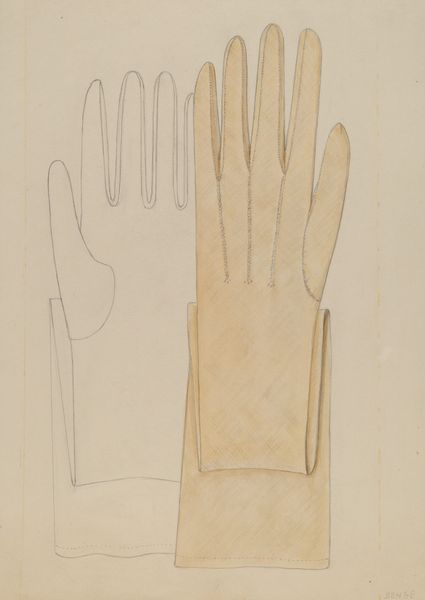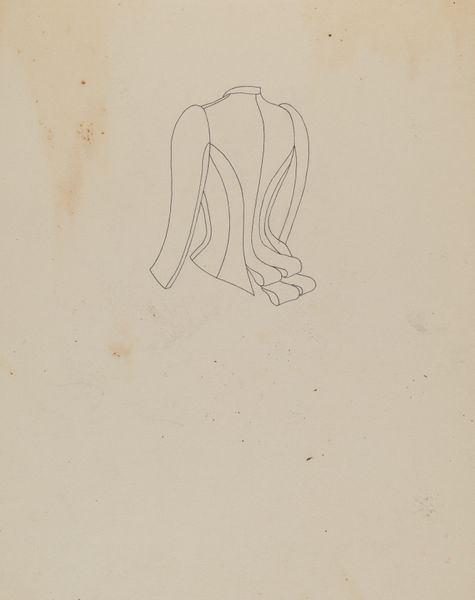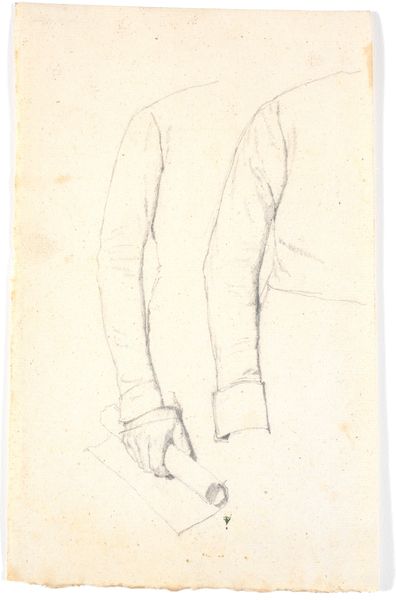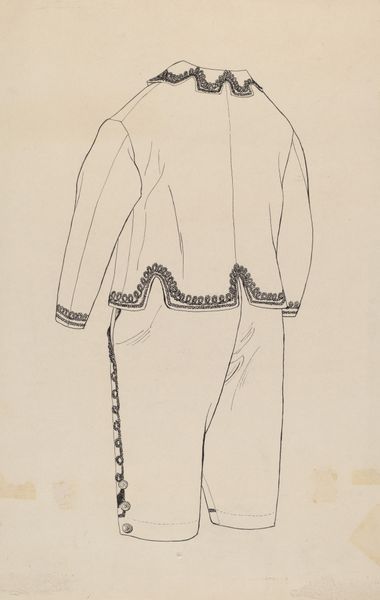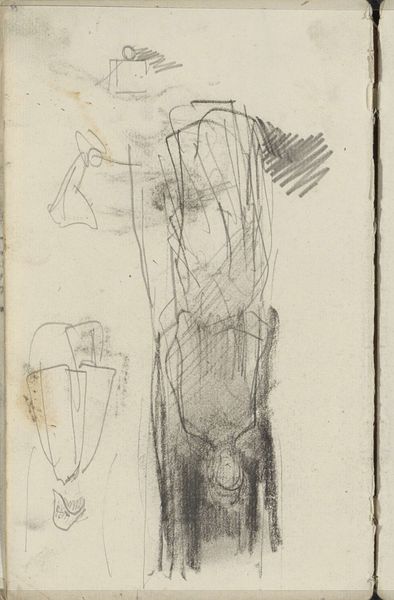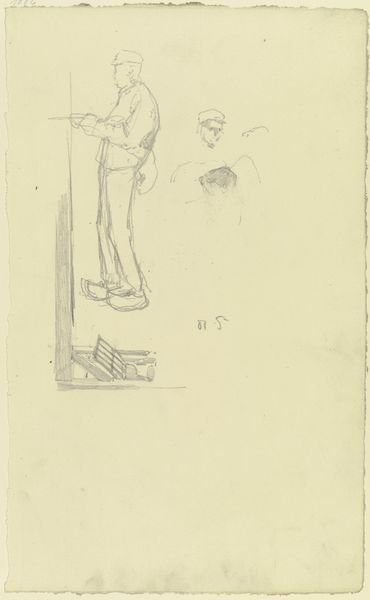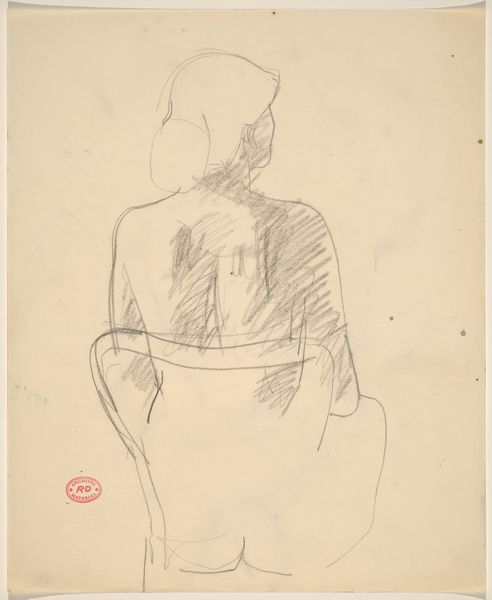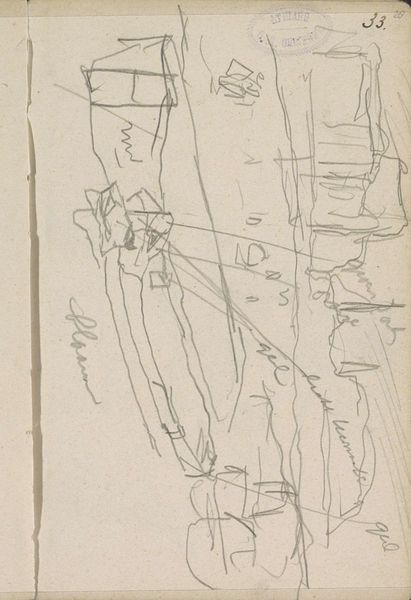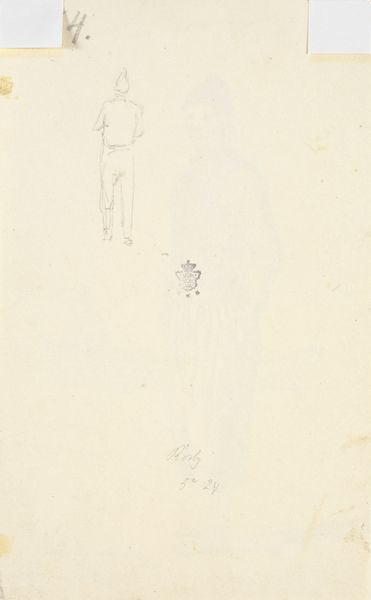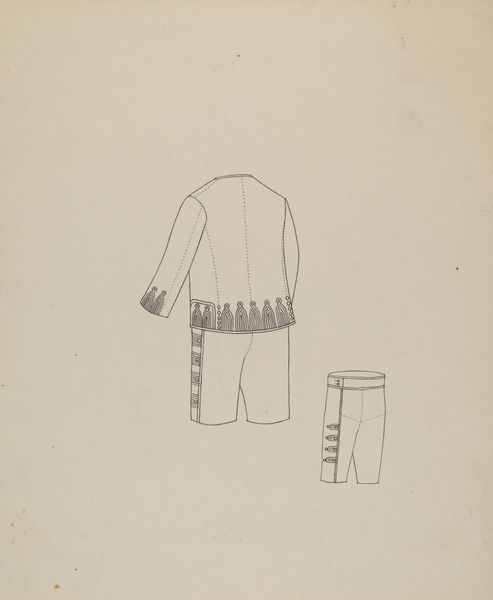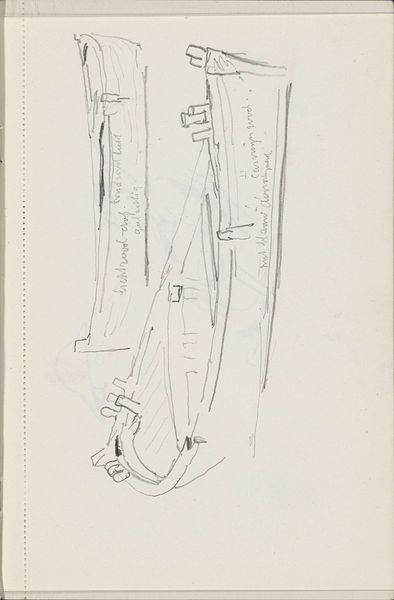
drawing, pencil
#
drawing
#
pencil
Dimensions: overall: 29.8 x 22.9 cm (11 3/4 x 9 in.)
Copyright: National Gallery of Art: CC0 1.0
Editor: Here we have Jessie M. Benge's drawing, "Wedding Gloves," created between 1935 and 1942 using pencil. It's a rather delicate rendering, but something about the portrait embedded on one of the gloves feels almost like a defacement. What do you make of this juxtaposition? Curator: Well, it's interesting to consider the historical moment in which this drawing was created. The late 30s and early 40s were marked by immense social upheaval. Seeing symbols of traditional femininity and marriage presented alongside a portrait that feels almost superimposed really invites reflection on the changing role of women and evolving social expectations around that time. Editor: So, you think it’s less about the gloves themselves and more about the broader context? What about the person in the portrait? Does that imagery matter, too? Curator: Absolutely. The insertion of that portrait - do we know who it is? - demands that we ask why that specific image was selected and placed there. Perhaps it's a statement about the idealized or even confined role that women were often expected to inhabit, even within the seemingly celebratory institution of marriage. Or it is meant as a personal touch, some family connection maybe? The drawing itself acts as an archival piece, preserving a material artifact - gloves - connected with such emotional human moment: marriage. The socio-cultural connotations behind that are what give the image the uncanny presence that you picked up on immediately. Editor: That makes a lot of sense. I initially saw it as jarring, but considering the time period, the artist could very well be questioning these established traditions. Curator: Exactly. By rendering these wedding gloves and incorporating a somewhat disruptive portrait, Benge compels us to look deeper at the power dynamics embedded in seemingly straightforward celebratory symbols. Editor: It’s amazing how a simple drawing can unveil so much about history and social commentary. Curator: Precisely. It’s in that tension that the real value of art lies, as a powerful lens for critical analysis of power and ideology.
Comments
No comments
Be the first to comment and join the conversation on the ultimate creative platform.
